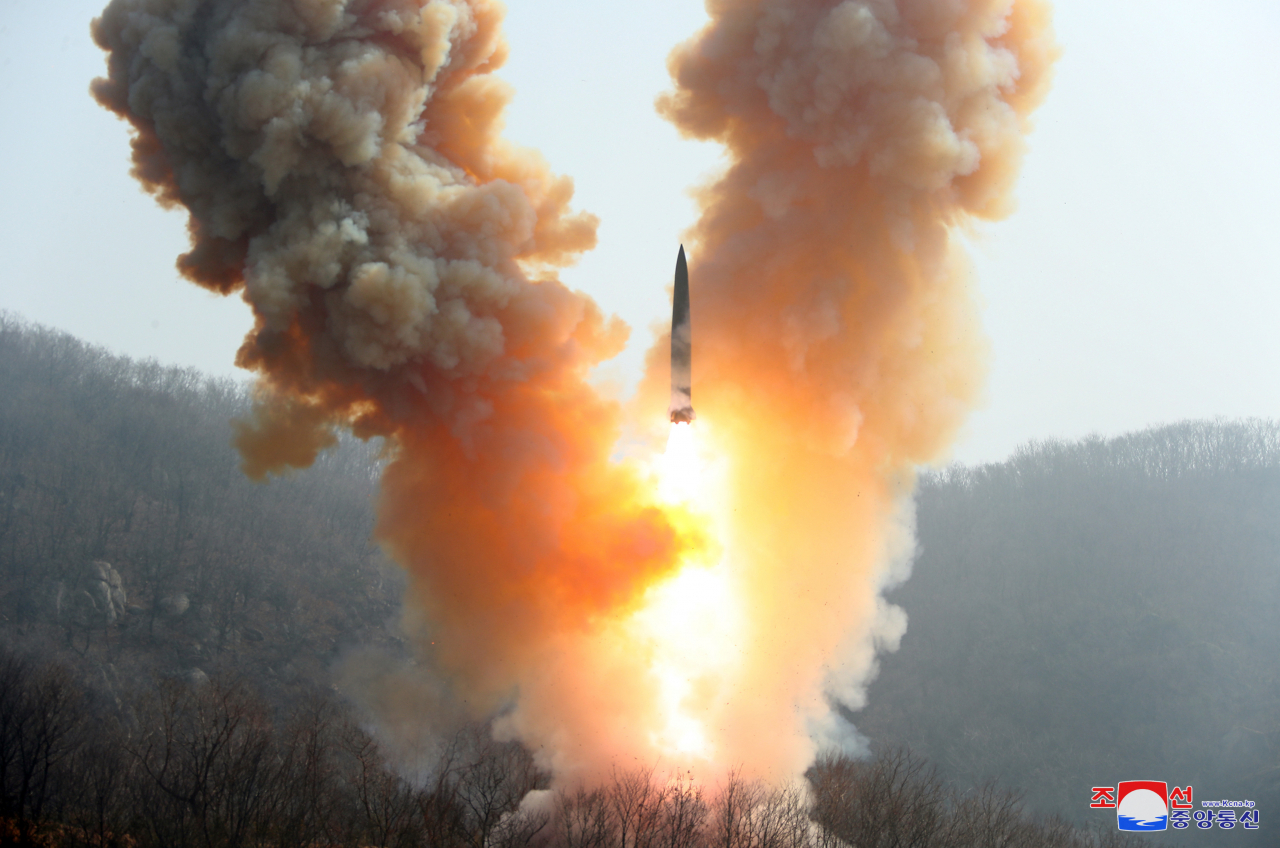 |
North Korea holds drills testing nuclear counterattack capabilities over the weekend in this photo released by the Korean Central News Agency on Monday. (KCNA-Yonhap) |
North Korea launched yet another ballistic missile toward the sea between South Korea and Japan on Sunday, while South Korea and the United States staged their annual joint military exercises aimed at dismantling the isolated country’s nuclear arsenal.
The United Nations Security Council, a 15-member body that includes five countries with veto powers, is expected to discuss the matter Monday, though issuing a UNSC presidential statement condemning the launch is highly unlikely given potential vetoes by China and Russia -- North Korea’s biggest supporters.
They are believed to be the UNSC members “undermining regional and international peace and stability,” according to a joint statement issued by the Group of Seven nations on Thursday, when Pyongyang launched an intercontinental ballistic missile.
Sunday’s short-range ballistic missile -- fired from the North’s Seohae Satellite Launching Station located in Tongchang-ri at 11:05 a.m. -- traveled about 800 kilometers, the Joint Chiefs of Staff in Seoul said, noting the South Korea and US authorities are looking into the launch to confirm the details. The allies flew a US B-1B strategic bomber as planned in a show of force.
The weapons test came as Seoul and Washington returned to full-scale field maneuvers Monday last week, marking a renewed push for a united front on Pyongyang, which still shows no signs of dialing back its aggression starting from a year ago. Last year, the North fired off a record number of missiles, defying international sanctions including UN SC resolutions banning its ballistic missile launches.
“South Korea and the US have improved their joint readiness, having simulated actions to deliver on extended deterrence,” a JCS official said of the 11-day drills, referring to a US pledge to use its full range of military capabilities, including nuclear weapons, to deter and respond to attacks on its allies.
Openly speaking about such US firepower, President Yoon has indicated Seoul will not easily succumb to Pyongyang’s demand that it suspend the field drills, which the North says are “rehearsals for invasion.” The drills, called efforts to enhance readiness by Seoul and Washington, were suspended in 2018 to make room for diplomacy on denuclearization, a hiatus that saw little headway.
Meanwhile, the chief nuclear envoys from South Korea, the US and Japan are stepping up efforts to bolster three-way ties, saying in a joint statement on Sunday that North Korea has nothing to gain from provocations and that the international community will continue to work on disarming the isolated country.
The momentum to build on the three-way military partnership has recently been revived as South Korea tries putting behind a historical feud over dealing with Koreans who were forced to work for Japanese companies during Japan’s 1910-45 rule of the Korean Peninsula. Last week’s two-day summit between Yoon and his Japanese counterpart in Tokyo, which ended Friday, reaffirmed the push for closer ties.
Yoon has recently called Japan a “partner to work with,” a relatively generous description of the country his predecessors had usually called out for bigger effort to atone for its colonial wrongs.






![[Today’s K-pop] Blackpink’s Jennie, Lisa invited to Coachella as solo acts](http://res.heraldm.com/phpwas/restmb_idxmake.php?idx=644&simg=/content/image/2024/11/21/20241121050099_0.jpg)
